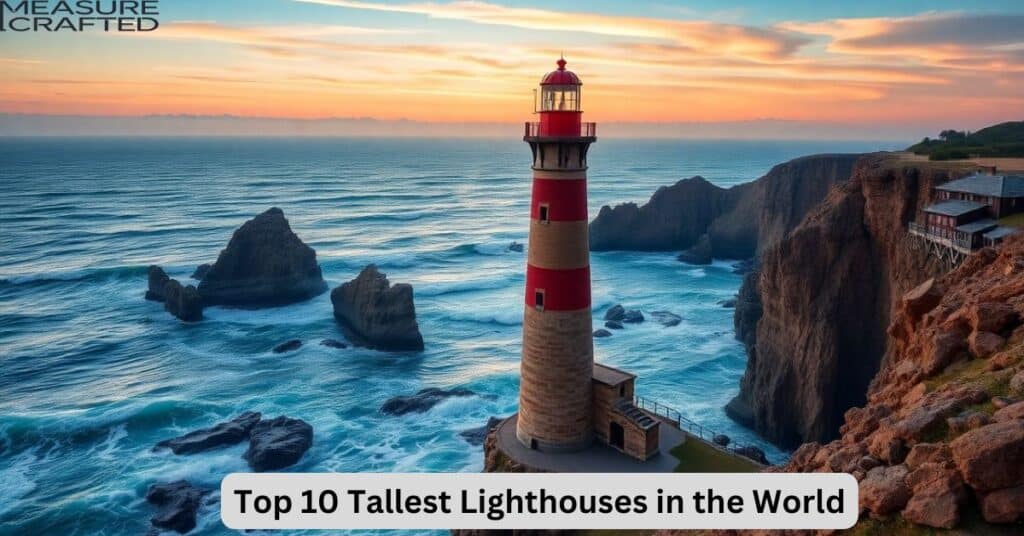Lighthouses are famous symbols of sea travel, standing tall along coasts and harbors to guide sailors and ships safely through dangerous waters. These towering structures, with their bright lights and navigation tools, have saved many lives and become amazing examples of unique architecture.
In this article, we will explore the tallest lighthouses worldwide, highlighting their historical significance, unique features, and modern roles.
What is a Lighthouse?
A lighthouse is a structure designed to emit light from a system of lamps and lenses, helping ships navigate safely by marking hazards and guiding them through safe routes. Historically, lighthouses used open fires, oil lamps, and later gas lamps before transitioning to electrical lights powered by modern systems like solar panels.
Lighthouses are also cultural landmarks, with some becoming popular tourist destinations. A few have been transformed into lighthouse hotels, offering travelers a unique and scenic stay. However, not all lighthouses are tall, some are shorter but strategically located on cliffs or elevated points to maximize visibility.
People often turn to quotes for guidance or comfort. They find solace in the words of others who have walked similar paths. Quotesnagar brings these words together, creating a treasure trove of insights. Explore the magic of words with Quotesnagar. Let the wisdom of others inspire your journey.
Get more insights, Discover Florida: Dimensions, Fun Facts, and Everything
Key Features of Lighthouses:
- Focal Height: The height of the light above sea level.
- Light Range: Distance the light can be seen, often over 20 miles for taller structures.
- Construction: Built from materials like stone, brick, concrete, or steel for durability.
evolution of lighthouses
The earliest lighthouses, including the famous Pharos of Alexandria, used open fires as a light source. By the 18th century, oil lamps paired with parabolic reflectors significantly improved the projection of light, enhancing navigational safety for ships.
In 1822, the invention of the Fresnel lens by French physicist Augustin Jean Fresnel transformed lighthouse technology. This lens allowed light to travel much farther by concentrating it into a powerful, focused beam, making lighthouses visible over longer distances.
Today, modern lighthouses use electrical lights powered by advanced systems such as solar panels and batteries. They also rely on automated navigation systems, which reduce the need for human keepers while maintaining their critical role in maritime safety.
The Tallest Lighthouses in the World
Lighthouses vary in design and purpose, but the tallest stand out for their remarkable heights, innovative construction, and cultural significance. Let us dive into the top 10 tallest lighthouses and discover what makes each one unique.
1. Jeddah Light (Saudi Arabia)
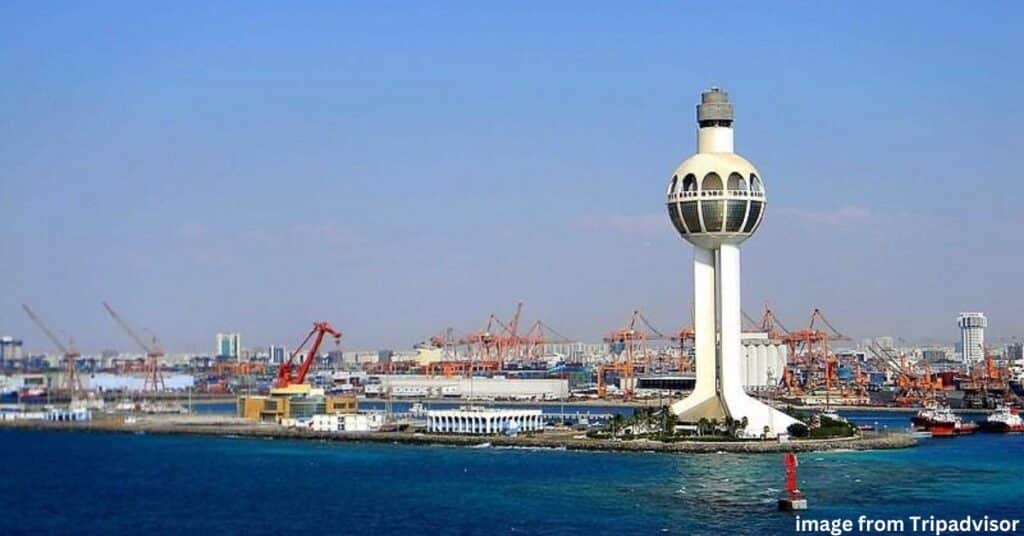
Jeddah Light, standing at 133 meters (436 feet), is the tallest lighthouse in the world. Located in Jeddah, Saudi Arabia, this towering structure combines functionality with modern design, serving as a vital navigation aid for one of the busiest harbors in the Red Sea.
Key Features:
- Height: 133 meters (436 ft), making it the world’s tallest lighthouse.
- Structure: Built from modern concrete and steel, featuring a sleek and durable design.
- Function: Acts as both a lighthouse and a control tower for Jeddah’s commercial harbor.
- Technology: Equipped with advanced maritime navigation systems and powerful electrical lights to ensure safety and efficiency.
Significance:
Jeddah Light symbolizes Saudi Arabia’s commitment to modernization and plays a crucial role in securing safe maritime navigation in the strategic Red Sea region.
Want to explore furthur, Dead Sea Insights: Dimensions, History, and Surprising Facts
2. Perry Memorial Monument (United States)
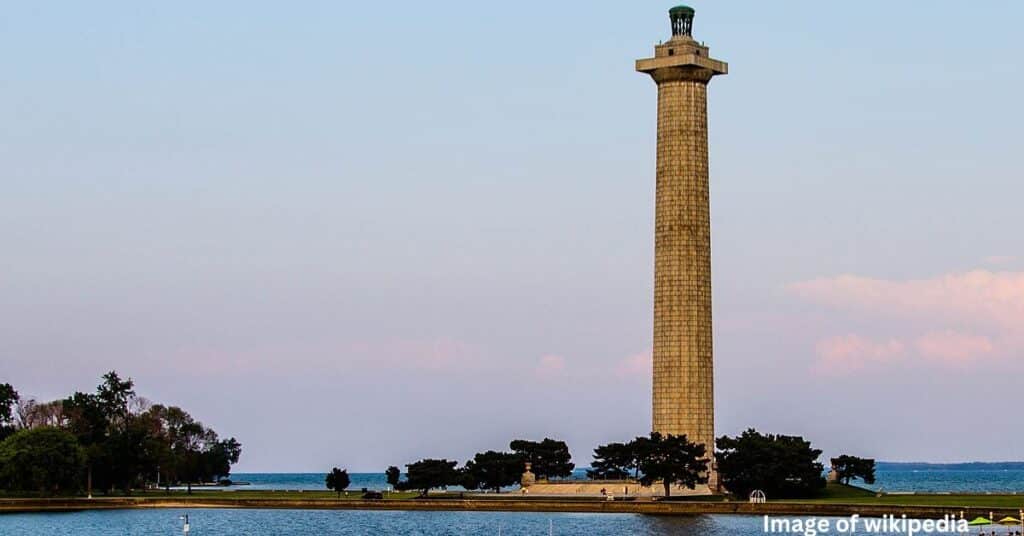
The Perry Memorial Monument, rising to 107 meters (352 feet), is located in Put in Bay, Ohio. Built as a tribute to Commodore Oliver Hazard Perry’s victory in the Battle of Lake Erie, this stunning structure blends history and functionality.
Key Features:
- Height: 107 meters (352 ft), making it one of the tallest memorial structures in the U.S.
- Purpose: Serves as both a historical monument commemorating a key War of 1812 victory and a navigation aid for mariners on Lake Erie.
- Observation Platform: Offers breathtaking panoramic views of Lake Erie and surrounding islands.
- Unique Design: One of the few structures with a dual purpose, a memorial and a navigation aid.
Significance:
This monument celebrates a pivotal moment in American naval history and provides modern navigational assistance, standing as a symbol of resilience and maritime heritage.
Interesting Fact:
It is one of the few lighthouses with a dual purpose: a memorial and a navigation aid.
3. Yokohama Marine Tower (Japan)
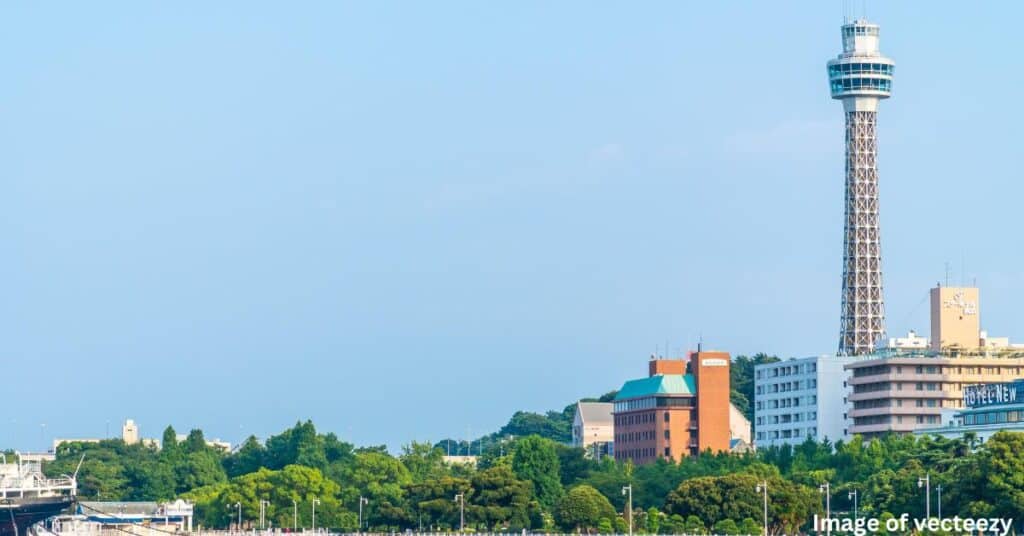
The Yokohama Marine Tower, standing at 106 meters (348 feet), is an iconic symbol of Japan’s maritime heritage. Located in the vibrant waterfront area of Yokohama, this lighthouse serves a dual purpose, combining functionality with tourism.
Key Features:
- Height: 106 meters (348 ft), making it one of the tallest lighthouses in Japan.
- Purpose: Functions as both a lighthouse and a popular tourist attraction.
- Observation Platform: Offers visitors panoramic views of Yokohama’s stunning skyline and Tokyo Bay.
- Night Display: Features a dazzling LED light show at night, adding charm to the city’s skyline.
Cultural Relevance:
The Yokohama Marine Tower reflects Japan’s dedication to maritime modernization while honoring its rich nautical heritage. It serves as a beacon not just for ships, but also for tourism and local pride.
4. Bicentennial Lighthouse (Argentina)
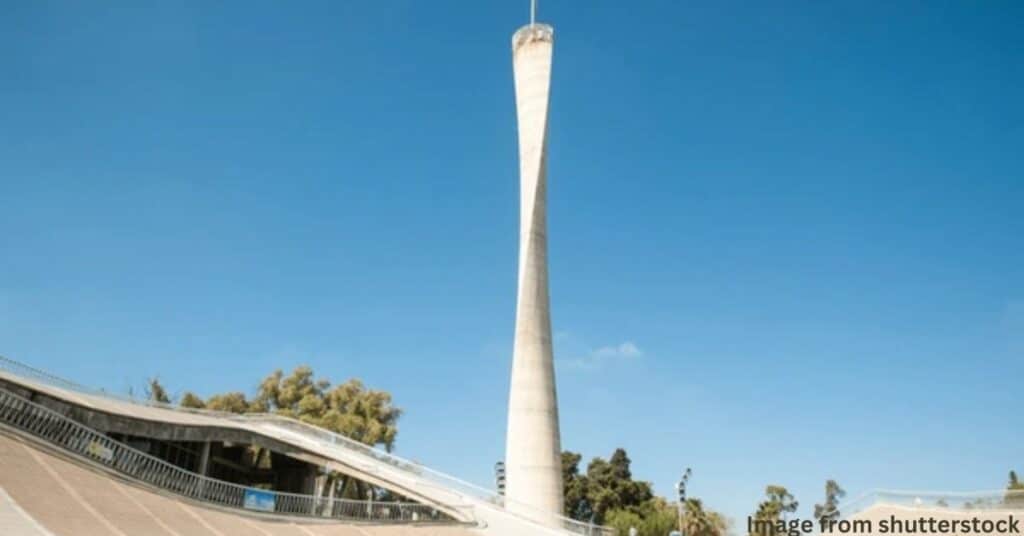
The Bicentennial Lighthouse, standing at 102 meters (335 feet), is a modern structure in Buenos Aires, Argentina, celebrating 200 years of the country’s independence. Its unique design combines symbolism and functionality, making it a prominent landmark.
Key Features:
- Height: 102 meters (335 ft), one of Argentina’s tallest monuments.
- Purpose: Primarily a commemorative structure but also serves as a navigation aid for nearby areas.
- Design: Futuristic and sleek, symbolizing Argentina’s progress and national pride.
- Lighting System: Equipped with modern lights that enhance its visibility at night.
Significance:
Built to mark Argentina’s bicentennial, the lighthouse stands as a testament to the nation’s resilience and forward thinking approach, blending historical reverence with modern technology.
Interested about, How Long is 999 Seconds? Practical Insights and Fun Facts
5. Palacio Barolo (Argentina)
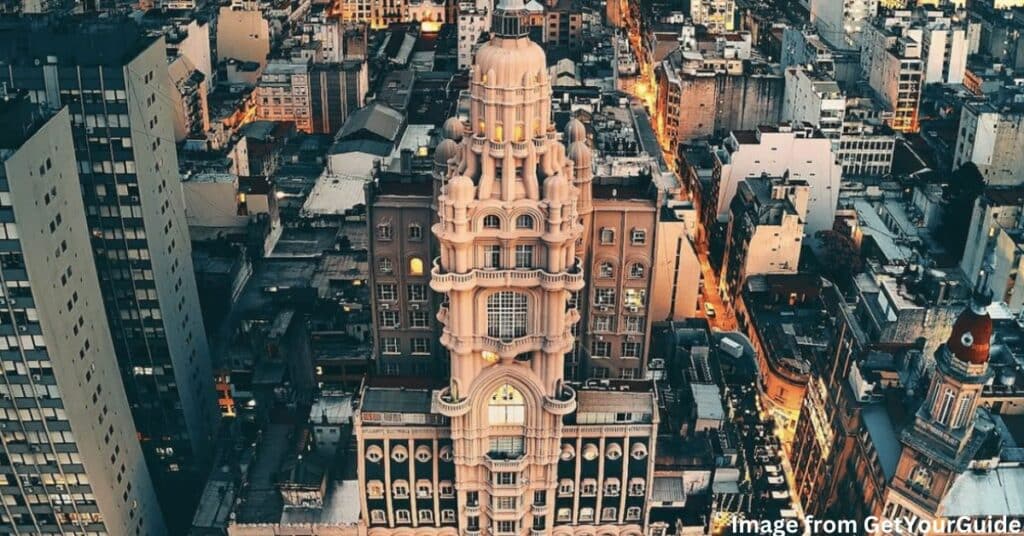
The Palacio Barolo, standing at 100 meters (328 feet), is a historic building in Buenos Aires, Argentina. This unique structure blends literary inspiration with functionality, making it an architectural and cultural treasure.
Key Features:
- Height: 100 meters (328 ft), once the tallest building in South America upon completion.
- Design: Inspired by Dante’s Divine Comedy, with architectural elements symbolizing hell, purgatory, and heaven.
- Purpose: A dual purpose building, housing office spaces and serving as a lighthouse.
- Lighthouse Beacon: Its light can be seen from Uruguay on clear nights, enhancing its maritime navigation significance.
Fun Fact:
The Palacio Barolo’s design reflects numerological elements from Dante’s work, including the 100 cantos in the Divine Comedy, symbolized by its 100 meter height.
6. Statue of Liberty (United States)
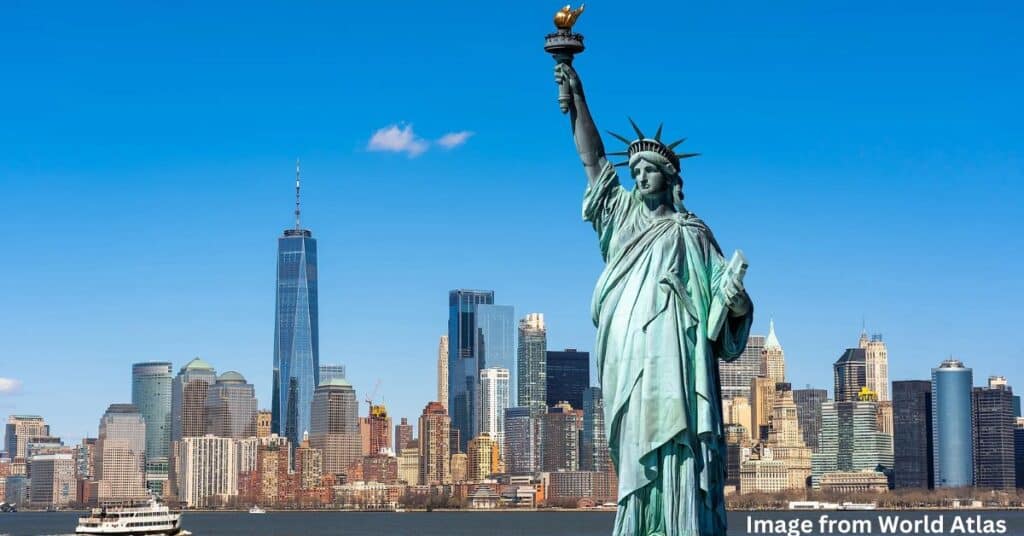
The Statue of Liberty, located in New York Harbor, stands at 93 meters (305 feet), including its pedestal. Originally designed as a gift from France, it became a symbol of freedom and a welcoming sight for immigrants arriving in the United States.
Key Features:
- Lighthouse Function: Operated as a lighthouse from 1886 to 1902, with its electric light visible for 24 miles (39 km).
- Design: Features a copper clad structure, designed by Frédéric Auguste Bartholdi, and an internal framework by Gustave Eiffel.
- Height Breakdown: The statue itself measures 46 meters (151 ft), with the pedestal and foundation making up the remaining height.
- Cultural Significance: Symbolizes freedom and democracy, welcoming millions of immigrants during the late 19th and early 20th centuries.
Cultural Impact:
Although it no longer functions as a lighthouse, the Statue of Liberty remains an enduring global icon of liberty and hope. It was designated a UNESCO World Heritage Site in 1984, underscoring its historical and cultural significance.
7. Île Vierge Lighthouse (France)
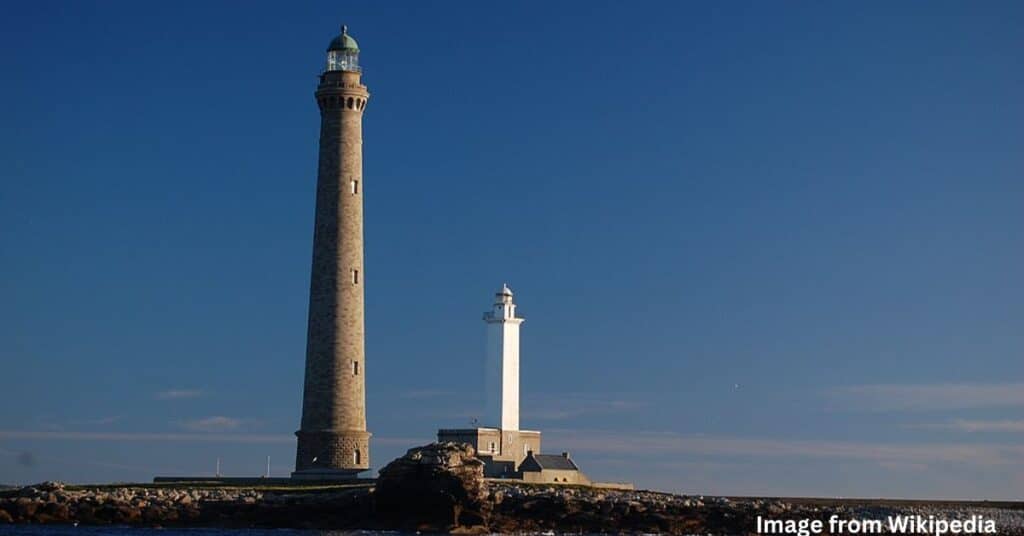
The Île Vierge Lighthouse, located in Brittany, France, is the tallest traditional lighthouse in the world, standing at 82.5 meters (271 feet). Built entirely from stone, it is a masterpiece of engineering and a significant symbol of France’s maritime history.
Key Features:
- Construction: Made entirely of granite, showcasing traditional craftsmanship.
- Fresnel Lens: Equipped with a Fresnel lens, a groundbreaking innovation that greatly enhanced the visibility of lighthouse beams, revolutionizing maritime navigation.
- Dual Towers: Includes both an older tower and the current taller lighthouse, completed in 1902.
- Staircase: Features a spiral staircase with 365 steps, lined with opaline glass tiles, adding to its architectural beauty.
Significance:
The Île Vierge Lighthouse exemplifies France’s maritime history and engineering excellence. It continues to serve as a vital navigation aid for ships navigating the rough waters off Brittany’s coast, while also attracting visitors with its historical and architectural allure.
Read more, How Long is 20 Feet? 11 Common Things That Are 20ft Long
8. Lighthouse of Genoa (Italy)
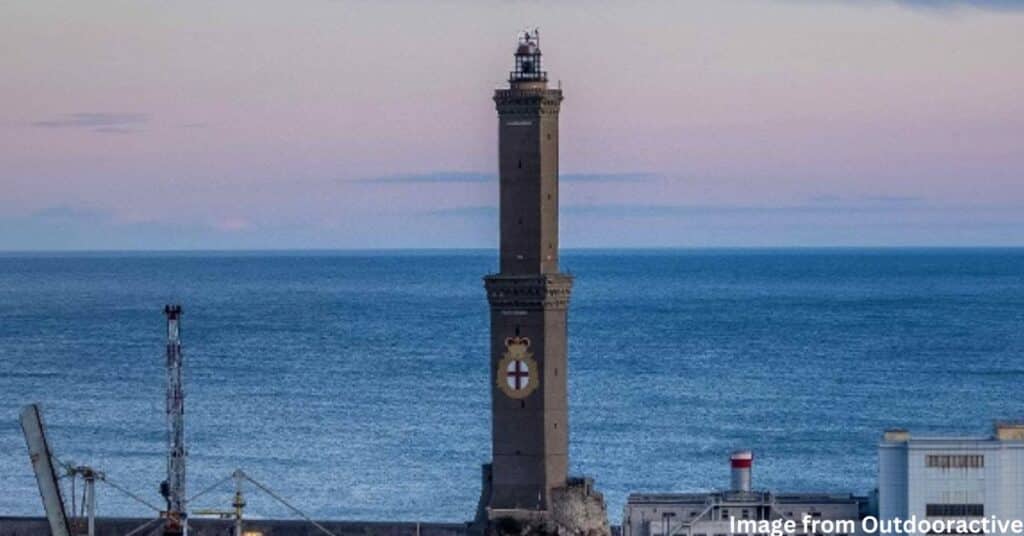
The Lighthouse of Genoa, also known as “La Lanterna,” is one of the most historically significant lighthouses in the world. Towering at 77 meters (253 feet), it stands as a proud symbol of Genoa’s maritime heritage and serves as the oldest active lighthouse, originally constructed in 1128.
Key Features:
- Age and History: First built in 1128, with major reconstructions in 1543, making it the oldest functioning lighthouse.
- Structure: A two tiered tower with a total height of 77 meters, perched on a hill, giving it an impressive focal height of 117 meters (384 feet) above sea level.
- Museum: Houses the Museum of the Lantern, displaying maritime artifacts and detailing the lighthouse’s historical significance.
- Navigation Aid: Remains operational, guiding ships into one of the Mediterranean’s busiest ports.
Significance:
The Lighthouse of Genoa has been a beacon for sailors for nearly 900 years, playing a crucial role in maintaining Genoa’s prominence as a Mediterranean trade hub. Today, it is a beloved historical monument and a must visit attraction, offering stunning views of the harbor and the city.
9. Phare de Gatteville (France)
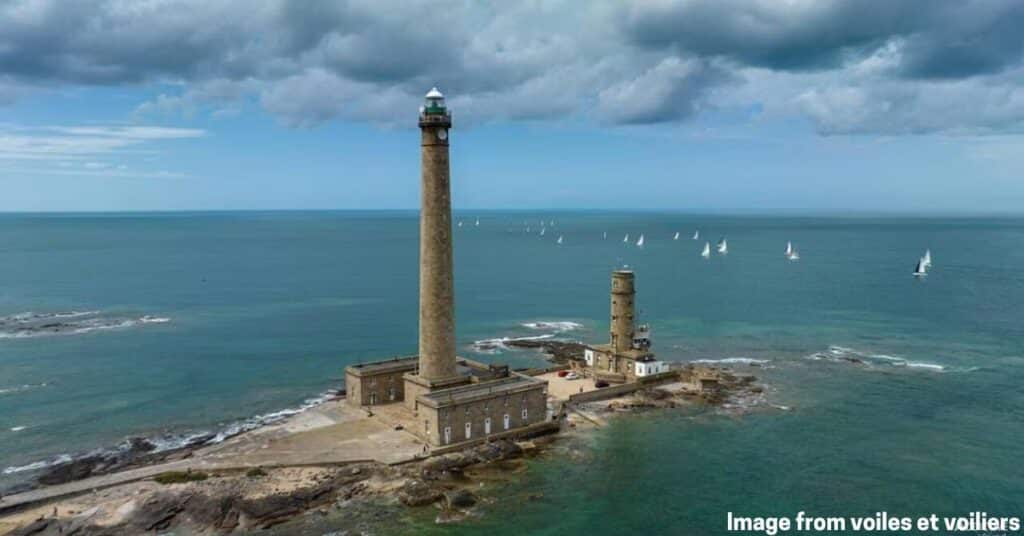
The Lighthouse of Genoa, also known as “La Lanterna,” is one of the most historically significant lighthouses in the world. Towering at 77 meters (253 feet), it stands as a proud symbol of Genoa’s maritime heritage and serves as the oldest active lighthouse, originally constructed in 1128.
Key Features:
- Age and History: First built in 1128, with major reconstructions in 1543, making it the oldest functioning lighthouse.
- Structure: A two tiered tower with a total height of 77 meters, perched on a hill, giving it an impressive focal height of 117 meters (384 feet) above sea level.
- Museum: Houses the Museum of the Lantern, displaying maritime artifacts and detailing the lighthouse’s historical significance.
- Navigation Aid: Remains operational, guiding ships into one of the Mediterranean’s busiest ports.
Significance:
The Lighthouse of Genoa has been a beacon for sailors for nearly 900 years, playing a crucial role in maintaining Genoa’s prominence as a Mediterranean trade hub. Today, it is a beloved historical monument and a must visit attraction, offering stunning views of the harbor and the city.
10. Lesnoy Mole Rear Range Light (Russia)
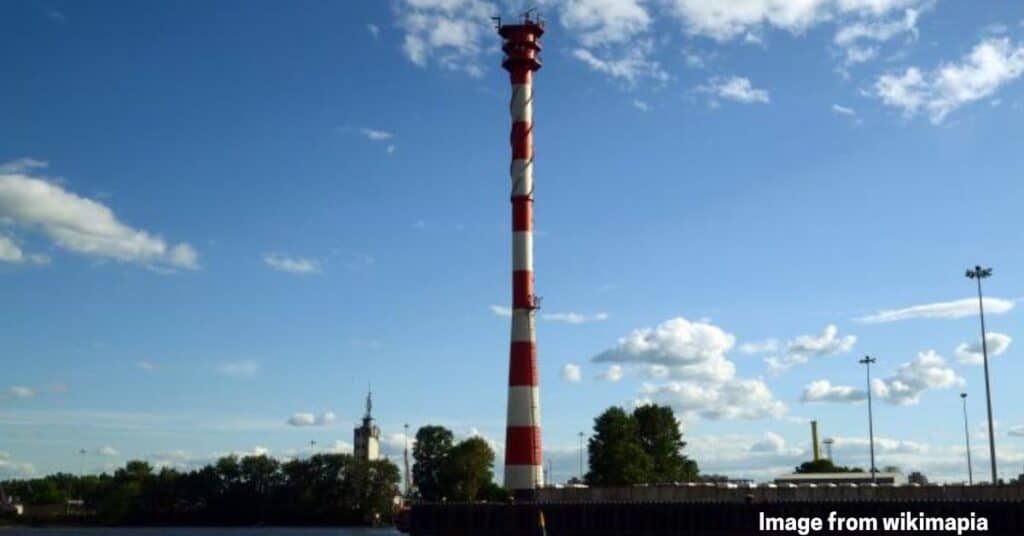
The Lesnoy Mole Rear Range Light, located in Saint Petersburg, Russia, is a vital navigation aid for one of the busiest ports in the Baltic region. At 73 meters (240 feet) tall, it exemplifies functionality over form, prioritizing utility for maritime operations.
Key Features:
- Design: A straightforward, utilitarian structure, emphasizing practicality over elaborate aesthetics.
- Purpose: Part of a range light system, it aligns with the front range light to guide ships safely into the Port of Saint Petersburg.
- Material: Constructed using durable materials to withstand the harsh Baltic climate.
- Light System: Equipped with modern electrical lights for reliable visibility, even in challenging weather conditions.
Significance:
The Lesnoy Mole Rear Range Light plays a critical role in navigational safety, ensuring smooth operations in one of Russia’s most important maritime gateways. While it lacks the grandeur of other lighthouses, its strategic importance and robust design make it indispensable to the shipping industry.
Fun Facts About Lighthouses
Lighthouses have some fascinating stories and unique features beyond their main purpose of guiding ships. Here are a few interesting facts:
- First Lighthouse: The Pharos of Alexandria, built around 280 BCE in Egypt, is considered one of the earliest lighthouses. It guided sailors into Alexandria’s harbor and stood as a symbol of ancient maritime innovation.
- Tallest Traditional Lighthouse: The Île Vierge Lighthouse in Brittany, France, is the tallest traditional stone lighthouse at 82.5 meters (271 feet). Its Fresnel lens significantly improved navigational safety for mariners.
- Lighthouse Hotels: Some lighthouses, such as the Heceta Head Lighthouse in Oregon, USA, have been converted into hotels or bed and breakfasts, offering visitors a unique way to experience maritime history and coastal beauty.
Dive deeper into the topic, How far away is the Moon?
Conclusion
Lighthouses stand as powerful symbols of maritime safety and innovation, guiding ships through hazardous waters for centuries. Their towering presence reflects humanity’s commitment to overcoming the challenges of the sea.
From their early designs to the modern marvels of today, lighthouses continue to serve as both functional beacons and cultural landmarks. They remind us of the ongoing relationship between technology, history, and the sea.
FAQs about lighthouses
1. What defines a lighthouse’s height?
A lighthouse’s height is measured from its base on the ground to the focal plane of its light source, where the beam is emitted.
2. Are all lighthouses still operational?
Not all lighthouses are operational. Many have been decommissioned and repurposed as tourist attractions, museums, or even lighthouse hotels.
3. Can visitors access these lighthouses?
Yes, many lighthouses are open to the public and offer tours, educational exhibits, or observation platforms with stunning views.
Lighthouses Quiz
1. What is the tallest lighthouse in the world?
a) Perry Memorial Monument
b) Île Vierge Lighthouse
c) Jeddah Light
d) Statue of Liberty
2. Which lighthouse was built to commemorate Argentina’s bicentennial?
a) Yokohama Marine Tower
b) Bicentennial Lighthouse
c) Lesnoy Mole Rear Range Light
d) Palacio Barolo
3. Where is the Lighthouse of Genoa located?
a) France
b) Italy
c) United States
d) Japan
4. Which lighthouse features a spiral staircase with 365 steps?
a) Île Vierge Lighthouse
b) Yokohama Marine Tower
c) Lighthouse of Genoa
d) Phare de Gatteville
5. What feature of the Statue of Liberty made it function as a lighthouse?
a) Its size
b) Electric light visible for 24 miles
c) Its design
d) Its location in the harbor
Answers:
- c) Jeddah Light
- b) Bicentennial Lighthouse
- b) Italy
- a) Île Vierge Lighthouse
- b) Electric light visible for 24 miles
Excited about, Mount Everest: Earth’s Highest Peak and Its Fascinating World

